commentary Commentary
Commentary: A crackdown in Myanmar could spark a humanitarian crisis
The military’s actions resemble the start of the crackdown in 1988 except the public angst may be turbocharged by technology this time around, says Dr Nehginpao Kipgen.
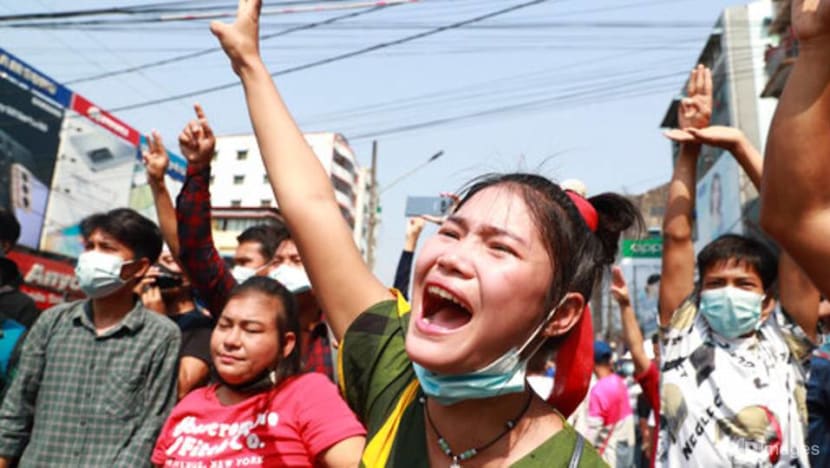
Protesters in Myanmar. (Photo: AP)
NEW DEHLI: On Monday (Feb 8), the authorities declared martial law in parts of Myanmar’s second largest city Mandalay and a township in the Ayeyarwady region in response to protests from hundreds of thousands across the country.
For the first time since protests began following the military coup on Feb 1, police have used a water cannon to disperse the crowds.
Then they fired live bullets in the air to intimidate protesters into standing down.
In an imminent sign of a further crackdown, the state broadcaster MRTV announced that:
Action must be taken according to the law with effective steps against offences which disturb, prevent and destroy the state’s stability, public safety and the rule of law.
Those warnings came amid calls from US President Joe Biden and other world leaders for the Myanmar generals to relinquish power or face consequences. Even Pope Francis called for the release of detained political prisoners.
READ: Commentary: Myanmar coup poses first foreign policy test for Biden on Southeast Asia
READ: Commentary: Myanmar military never had any intention of giving up power
HISTORY RHYMES
The rapid escalation of the situation since the coup a week ago has shocked the international community.
But few of us should be surprised given the country’s long military rule of almost five decades (from 1962 to 2010). These new measures and warnings may just be the beginning.
The military leadership will resort to using a deadly force by deploying the army on the streets if they feel pushed into a corner.
This happened in the past, in 1988 and 2007, when the army used deadly force to crack down on demonstrators.
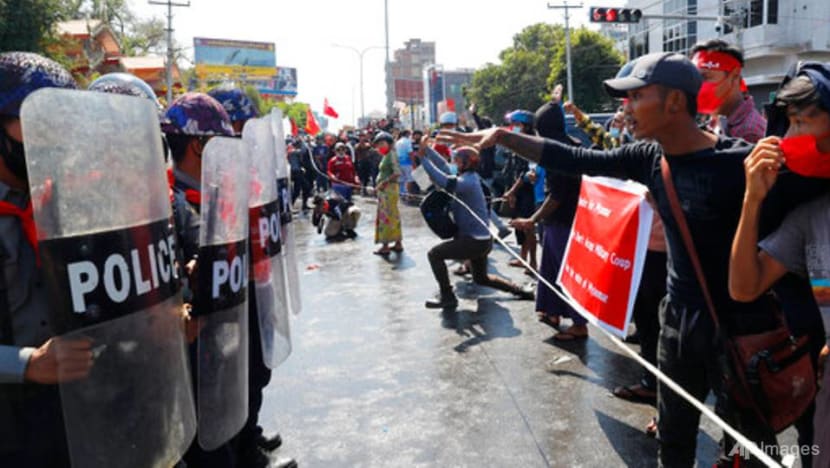
During the 1988 demonstrations, thousands were killed by security forces after students took to the streets to protest the state of the economy and lack of political freedoms.
The protests also threw up a face for the pro-democracy movement, Aung San Suu Kyi, whose powerful, historic speech at the iconic gilded Shwedagon Pagoda to hundreds of thousands eventually landed her in house arrest but not before raising a storm over the Southeast Asian nation.
The military imposed martial law, banned public demonstrations and rounded up protesters.
And even when they subsequently held those promised elections in 1990, the military backtracked after Aung San Suu Kyi’s National League for Democracy (NLD) party won 60 percent of the popular vote and 80 percent of the parliamentary seats (392 out of 485). Opposition figures were rounded up.
Pent-up tensions since have occasionally bubbled to the surface.
The 2007 Saffron revolution saw tens of thousands of protesters, with monks leading the charge, call for an end to military rule after a steep rise in fuel prices sparked discontent. The military government put the death toll at 37 but opposition groups claimed a much higher number.
READ: Commentary: Why a military coup cannot be the solution in Myanmar
READ: Commentary: Myanmar’s coup - end of the power sharing arrangement between military and civilian forces?
CLASH OF BELIEFS
There have been three successive military coups since the country’s independence from the British: In 1962, 1988 and 2021. The first coup was largely a bloodless one, the second the most violent and brutal, and it is still early to say what the scale of the 2021 coup will eventually culminate in.
Despite variations in the use of force and the size of casualties, common across all three has been the public reaction. The people have in all three instances strongly disapproved of a military take-over of the country. They have also expressed a desire for democratic elections and free and fair representation.
What stands out in the 2021 coup, however, is the military leaders’ effort to portray themselves as the heroes standing up for the rule of law, the good of the country and the preservation of what it calls the country’s transition toward a “genuine and discipline-flourishing democracy".
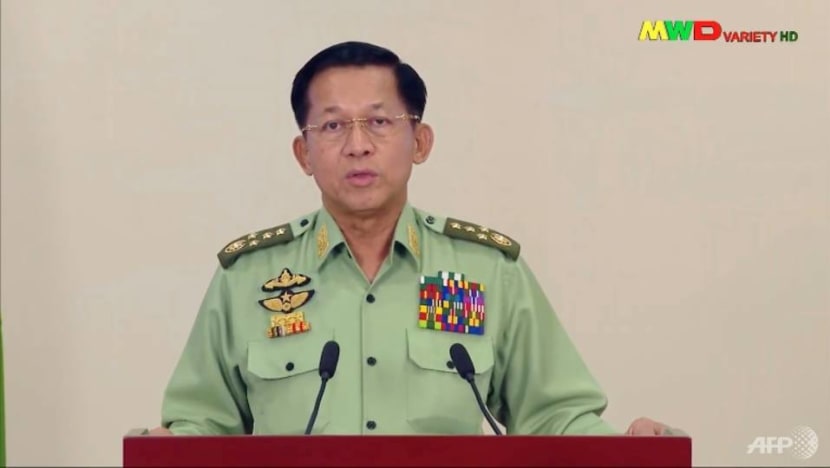
The military leaders may truly believe despite public protests that they are the guardians of Myanmar and play a sacred role in preventing the country from disintegration into turmoil.
We can expect their actions to take reference from this hardline stance. Thus far, riot police officers have fronted enforcement actions against demonstrators.
But if protests continue, we cannot rule out the deployment of the army throughout the country, especially in strategic locations and major cities.
READ: Commentary: ASEAN can do better on Myanmar this time
The military believes that they will face few, if any, repercussions from the international community if they have to employ force to accomplish what they see as safeguarding law and order. They know any actions the United Nation Security Council can take under Chapter VII of the UN Charter requires the consensus of all five permanent members and a majority vote in the Security Council.
As in the past, China, backed by Russia, will likely block future attempts to condemn Myanmar and can be counted on to veto the use of force.
Any external intervention may be framed under the United Nations’ Responsibility to Protect (or R2P) if developments show the authorities in Myanmar are endangering its own people, but even such scenarios are still vastly unimaginable.
READ: Commentary: Is COVID-19 the final straw for the United Nations?
MASS PARTICIPATION
Meanwhile, developments in Myanmar are coming to a head. It has only been a few days but the size and diversity of protesters have surged since Facebook outage was lifted, allowing more demonstrators to coordinate.
Many managed to find a roundabout to stay connected to the outside world, even when internet and phone lines were disrupted. There are reports people were able to use a virtual private network (VPN) to continue to reach out and stay connected to the outside world.
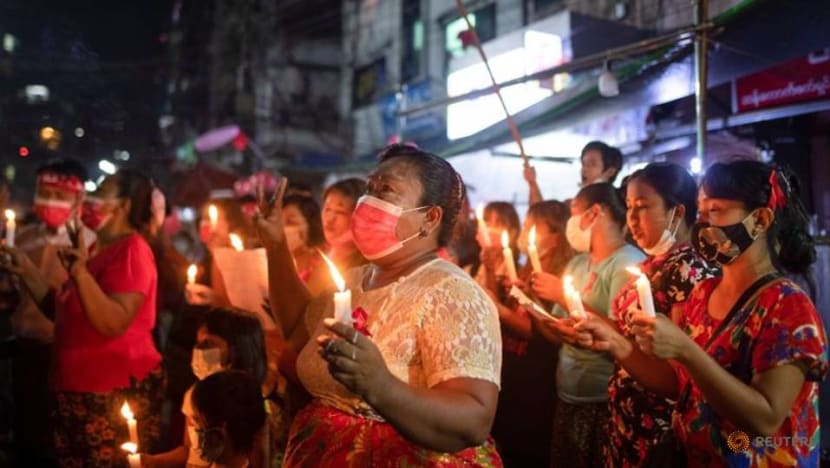
Tens of thousands of people decked in red – the colour of Aung San Suu Kyi’s party – protested on the streets of Myanmar, from NLD supporters to students and teachers, lawyers, medical professionals, civil servants, textile workers, railway employees and more. Motorists sounded horns in unison.
The protests have now spread to many parts of the country – from the metropolitan cities to smaller towns in the China-Myanmar border in Kachin state and the India-Myanmar border in Sagaing region.
These demonstrations have also been joined by Myanmar expatriates across the globe, from Washington to London and Bangkok and several other cities, where they’re putting pressure on governments where they reside to take action. Thus far, travel bans, sanctions on individuals have been imposed by countries like New Zealand.
Though not everyone liked the NLD government and its style of leadership – including how the Rohingya crisis was handled – the scale and representativeness of these groups who have come together suggest the Myanmar populace share a common goal in wanting to end military rule.
READ: Commentary: International law has its limits in protecting the Rohingya in Myanmar
READ: Commentary: Why Myanmar voted overwhelmingly for Aung San Suu Kyi again
The military had after all gone against the decisions of the Union Election Commission and violated the constitution it drafted by not convening the National Defense and Security Council, the highest security body, which requires the president to recommend or approve an emergency rule.
Over the next few days and weeks, if the protests persist, we cannot rule out the military resorting to a crackdown, as witnessed in the past, to forcefully suppress the protests. Many lives could be lost.
And if the protesters do not surrender, we also cannot eliminate the possibility of a violent confrontation which could result in a humanitarian crisis.
Already, at least six military trucks and almost 100 troops have been deployed on Tuesday to the main Yangon shopping city area, which has been a staging point for protests.
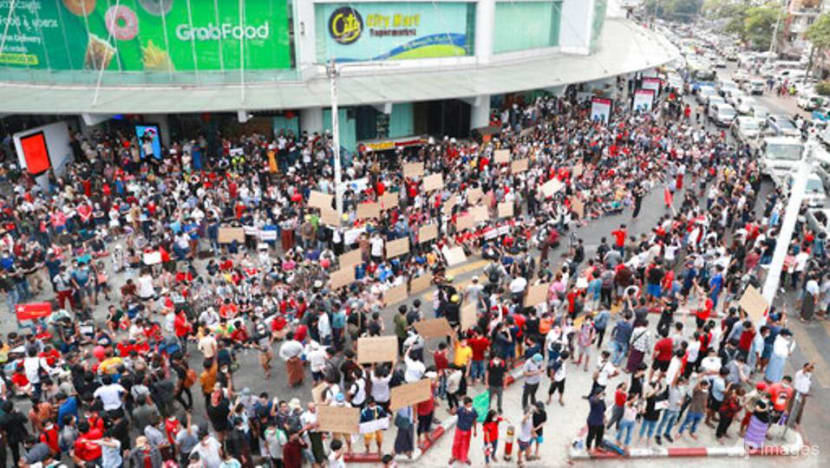
History might not repeat but it sure rhymes. The last protests in 2007 saw protesters seething. The Myanmar people might be less forgiving this time around – when a legitimate election was robbed and the victors rounded up to be silenced.
The events of this week bears uncanny resemblance to 1988. Except the protestors now have the digital tools to organise themselves and coordinate actions.
Dr. Nehginpao Kipgen is a Political Scientist, Associate Professor and Executive Director at the Center for Southeast Asian Studies, Jindal School of International Affairs, O.P. Jindal Global University. He is the author of three books on Myanmar, including ‘Democratization of Myanmar’.












